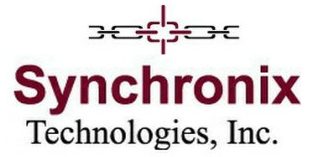When Six Sigma is used to improve the performance of a Constraint, EVERY project yields a profit boost. When an improvement is leveraged in this way, even a tiny improvement can translate into impressive bottom line improvement. And the improvements we typically help a company achieve are far from being “tiny.”
When the technology is deployed to improve the performance of a non-constraint that is threatening to cause problems for a constraint; or a non-constraint where the improvement opportunity contributes directly towards establishing a Decisive Competitive Edge – the impact is direct, often massive, and connects to the bottom line through increased sales.
Theory of Constraints, TOC, provides the platform for both of these to happen; the essence of TOC is the combination of Focus and Leverage. And a key characteristic is cause-effect.
So TOC gives you the ability to say “If we make THAT change over HERE then the result will look good and feel good, but won’t do anything for the bottom line or for the competitive edge. But if I make EXACTLY the same change HERE instead, the impact will be fast, direct, big in scale, and it’ll provide additional profits within 48 hours and help us win the new account we’re fighting for …”
So when we find a company with in-house Six Sigma expertise, we are excited because they have the ability to bring to bear a powerful tool that has no equivalent in our Theory of Constraints technology for specific tasks and we know we can point the laser at EXACTLY the most highly-leveraged opportunities.
(Visit this page for more information, including a published case study of a 21-plant Corporation that tested TOC, Lean and Six Sigma. The results are eye-opening.)
Rod Gelhorn, one of the founders of Synchronix, was a Total Quality Management specialist when I first met him. He didn’t just use Quality Management techniques, he taught them. And he didn’t just teach them, he taught the trainers who taught them.
We became business partners when we brought a California-based executive to a combined APICS and ASQC (now ASQ) meeting and this executive explained how, after years of TQM, they had gained more quality improvements in months following their TOC implementation – and simply as a side-line benefit – than in the years of focusing on quality improvements with blinkers on.
As we have worked together for 25+ years I saw over and over how his statistical approach of “In God we trust, everyone else brings data” and the methodical approach to addressing Constraint and non-Constraint challenges translated into huge gains for our clients.
These days we collaborate with one of the most experienced Six Sigma Master Black Belts on the planet, based in BC’s Lower Mainland (as are we), he also has a much broader array of Quality Engineering tools to bring to the table.
Background (and a small Rant)
Six Sigma is a powerful tool when deployed correctly. “Correctly” from my perspective means, used with laser-focus on problems that are appropriate targets for the technology.
Instead, we too-often see Six Sigma being used as a catch-all improvement technology with laughable impact. At its worst extreme we see companies who train scores of people to some “Belt” status, launch scores of improvement projects (essential to gain certification), complete hardly any of them and show no significant benefits in terms of the bottom line or competitive edge performance from those that are completed.
TOC Workshop participants at one recent client explained how, after close to 6 figures of training expenses, 22 projects had been launched and 6 months later 3 had been completed, no-one knew if any of the others were still in progress, and how it didn’t really matter anyway because those 3 had had no significant impact on anything important anyway.
I say “laughable” but in reality these types of stories just make us frustrated.
Unfocused, “improve everything everywhere” is one of the most appalling illustrations of Waste in the modern industrial world. Wasted time, energy, money, and senior managers are eroding the trust of their middle managers and staff and hourly employees, which is an entirely different type of waste carrying the highest price of all. And these efforts are often under the umbrella of “reduce waste.”
But the managers and staff who tell me their stories, off the record, DO laugh about it, not because it’s a joke but because “Steve, if we didn’t laugh we’d have to cry.”
